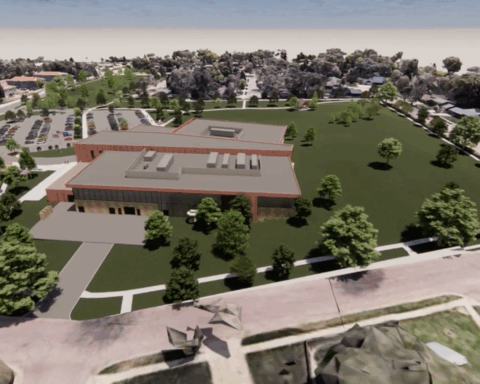Nearly $725 million is now available to 22 states and the Navajo Nation for reclaiming abandoned mine lands (AML), the U.S. Department of the Interior announced.
This is the third allocation from the $11.3 billion in AML funding provided by the Bipartisan Infrastructure Law (BIL), which supports communities in cleaning up hazardous environmental conditions and pollution from past coal mining activities.
Communities once driven by the coal industry now suffer from pollution due to abandoned mine lands, which release toxic discharge into the environment, cause land subsidence and structural issues and ignite underground mine fires. The funds will assist communities by creating jobs for displaced coal workers and ensuring clean air and water through cleanup projects.
AML reclamation invests in projects that close dangerous mine shafts, stabilize unstable slopes, treat acid mine drainage to improve water quality and restore water supplies damaged by mining. These projects also convert hazardous land into recreational facilities and other redevelopment uses, such as advanced manufacturing and renewable energy deployment. In line with the BIL, states and tribes are encouraged to prioritize projects that employ current and former coal industry workers.
“We are making historic investments to help revitalize local economies and support reclamation jobs that help put people to work in their communities, all while addressing environmental impacts from these legacy developments,” Interior Secretary Deb Haaland said. “These smart investments will build a cleaner, healthier and more just future for communities across the country.”
States are already putting to work $1.4 billion from the BIL’s first two years to plan and implement projects that protect homes and infrastructure from subsidence and landslides, create recreational opportunities and clean up streams contaminated with acid mine drainage. The total funding for AML projects is anticipated to allow for the reclamation of most of the currently documented abandoned mine lands.
The states eligible for funding from this AML round are Alabama, Alaska, Arkansas, Colorado, Illinois, Indiana, Iowa, Kansas, Kentucky, Maryland, Missouri, Montana, New Mexico, North Dakota, Ohio, Pennsylvania, Tennessee, Texas, Utah, Virginia, West Virginia and Wyoming.
AML grants may generally only be used on one or more of the following:
- Priority 1 and Priority 2 Projects that protect public health, safety and property from dangers posed by coal mining practices, including the restoration of nearby land, water resources and the environment.
- Priority 3 Projects that restore land, water resources and the environment previously damaged by coal mining practices. They may involve the design, construction, operation, maintenance and rehabilitation of acid mine drainage treatment facilities, whether or not they are part of a qualified hydrologic unit.
- Water Supply Restoration Projects that protect, repair, replace, construct or improve facilities related to water supply, including water distribution facilities and treatment plants, to replace water supplies harmed by coal mining practices.
- AML Emergency Projects: Urgent projects that address the restoration, reclamation, abatement, control or prevention of adverse effects from coal mining practices on eligible lands when there is an emergency posing a threat to public health, safety or general welfare, and no other entity will act quickly to resolve the issue.
Eligible states and tribes can apply for funding through the GrantSolutions website.












